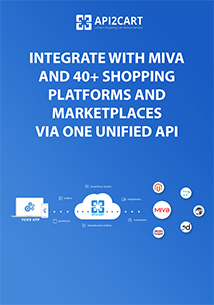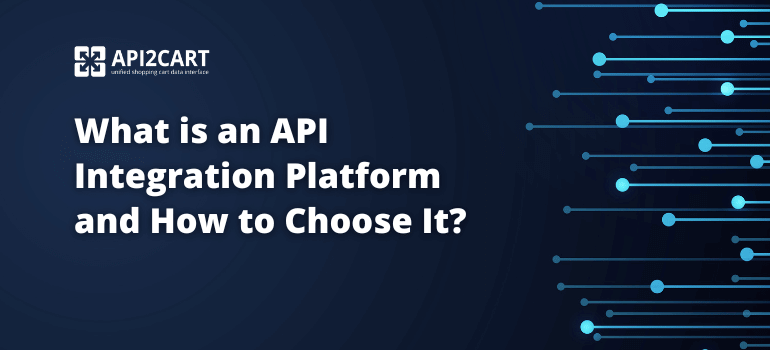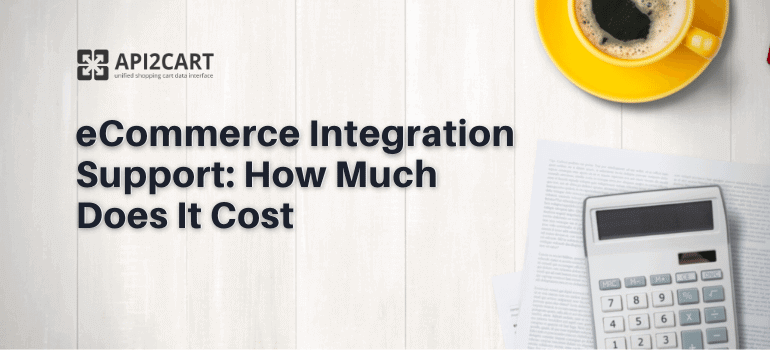
Effective product management is crucial for successful eCommerce operations. For developers working with Miva, the Miva product management API, based on the powerful Miva JSON API, provides essential tools to automate and streamline product listings management. As a result, developers can efficiently handle product creation, updates, inventory synchronization, and category assignments, while also integrating seamlessly with third-party systems via the Miva Merchant API.
This Miva API simplifies integration with warehouse management systems, synchronizing product data across multiple sales channels. Moreover, by automating repetitive tasks and enabling real-time data synchronization, it improves operational efficiency and ensures up-to-date, accurate product information. In this article, we will explore the key features, benefits, and practical usage of the Miva product management API, as well as how it can enhance the overall performance of eCommerce platforms.
What is Miva API?
Miva is a leading eCommerce platform designed for businesses to create, manage, and scale online stores. Miva offers a robust ecosystem with APIs that enable seamless integration, customization, and automation of eCommerce operations. The API is built on a JSON-based architecture and provides developers with flexible tools to interact programmatically with Miva stores.
Although, The Miva API supports various eCommerce tasks such as product management, order processing, and inventory synchronization. However, by using RESTful endpoints, developers can easily manipulate data on products, customers, and orders. This API is essential for building tailored solutions for Miva-based stores.
Key Features of the Miva Product API
The Miva product API enables developers to automate and optimize product workflows. Key features include:
Product Creation and Updates
:- Create new products with essential details like name, SKU, price, and images.
- Update product details including pricing, inventory, and attributes.
- Delete products in bulk or individually.
Inventory Management
:- Synchronize stock levels across multiple platforms and warehouses.
- Automate restocking workflows and prevent overselling by maintaining accurate data.
Category Management
:- Assign products to one or more categories.
- Manage and retrieve categories programmatically for better organization.
Custom Attributes and Variations
:- Create and manage product options like size, color, or material.
- Manage SKUs for product configurations and variations.
Bulk Operations
:- Perform bulk updates for product pricing, inventory, and category assignments.
Real-Time Data Synchronization
:- Integrate with webhooks for real-time updates when product data changes.
- Synchronize product details with external platforms like CRMs or marketplaces.
Secure and Scalable Integration
:- Use OAuth 2.0 for secure authentication and access control.
- Efficiently handle large product catalogs for scalable operations.
Flexible Query Capabilities
:- Filter products by categories, attributes, or inventory levels to optimize data retrieval.
Multi-Platform Integration
:- Sync product data with external tools like marketplaces, CRMs, and analytics systems.
The Miva Product Management API streamlines product management and enhances workflows. Whether handling large catalogs, synchronizing with third-party systems, or automating updates, this API provides the necessary flexibility for modern eCommerce operations.
The Importance of API Integration for Managing Product Listings on Miva
Efficient product management is essential for providing seamless eCommerce operations and an optimal customer experience. For software developers working with Miva, leveraging API integration is key to automating product workflows, maintaining accurate data, and enabling scalability. The Miva product management API and the Miva Merchant API help streamline product creation, updates, and synchronization across platforms. Moreover, these APIs make it easier to integrate Miva-based stores with external tools, further enhancing operational efficiency.
Here are some reasons why API integration is crucial for managing product listings on Miva:
- Automation Reduces Manual Effort: API integration automates product updates, reducing human error and time spent on repetitive tasks.
- Real-Time Data Synchronization: Real-time updates ensure accurate product data across platforms, preventing issues like overselling.
- Scalability for Growing Businesses: API integration supports large product catalogs and high-frequency updates, adapting to the growing needs of eCommerce businesses.
- Improved Data Accuracy: Automated updates ensure consistency and accuracy, reducing the risk of errors in product data.
- Customizable Workflows: Developers can create tailored workflows and features based on specific business requirements, such as advanced filtering or dynamic pricing.
- Supports Third-Party Integrations: API integration connects Miva product data with external tools, improving data flow and efficiency across systems.
Why it`s important for Miva API?
Since API integration is essential for software developers managing Miva product listings. So It helps automate workflows, synchronize data, and scale operations. By reducing manual effort, improving accuracy, and enabling multi-channel integration, the Miva API enables businesses to remain competitive in the evolving eCommerce landscape.

Wait!
Before you leave, get our guide on how to easily integrate with the Miva API and 60+ other eCommerce platforms in less than a month!
Using API2Cart for Miva API
As you now, managing product listings on Miva can be complex, especially when integrating with multiple systems. API2Cart simplifies this by offering a unified API that connects developers to Miva and over 60 other platforms. So API2Cart helps manage product catalogs, automate workflows, and streamline multi-channel operations without individual platform integrations.
API2Cart enables:
- Add, update, or delete products in Miva stores programmatically.
- Manage product attributes, categories, inventory, and media files.
- Perform bulk operations for efficient management of product catalogs.
Miva API Documentation via API2Cart
API2Cart provides detailed documentation, a sandbox for testing, and seamless error handling, saving time and resources in managing large catalogs. Additionally, by using the Miva JSON API, developers can ensure smoother integration and better control over their product management processes. Here’s a list of API2Cart’s methods for Miva product management:
- product.add - Add a new product;
- product.update - Update an existing product;
- product.info - Retrieve product details;
- product.list - Get a list of products;
- product.delete - Delete a product;
- product.image.add - Add product images.
Example Response Structure for order.list
So, here is the response structure of the order.list method:
{
"return_code": 0,
"return_message": "string",
"pagination": {
"previous": "string",
"next": "string",
"additional_fields": {},
"custom_fields": {}
},
"result": {
"orders_count": 0,
"order": [
{
"id": "string",
"order_id": "string",
"basket_id": "string",
"channel_id": "string",
"customer": {
"id": "string",
"email": "string",
"first_name": "string",
"last_name": "string",
"phone": "string",
"additional_fields": {},
"custom_fields": {}
},
"create_at": {
"value": "string",
"format": "string",
"additional_fields": {},
"custom_fields": {}
},
"currency": {
"id": "string",
"name": "string",
"iso3": "string",
"symbol_left": "string",
"symbol_right": "string",
"rate": 0,
"avail": true,
"default": true,
"additional_fields": {},
"custom_fields": {}
},
"shipping_address": {
"id": "string",
"type": "string",
"first_name": "string",
"last_name": "string",
"postcode": "string",
"address1": "string",
"address2": "string",
"phone": "string",
"phone_mobile": "string",
"city": "string",
"country": {
"code2": "string",
"code3": "string",
"name": "string",
"additional_fields": {},
"custom_fields": {}
},
"state": {
"code": "string",
"name": "string",
"additional_fields": {},
"custom_fields": {}
},
"company": "string",
"fax": "string",
"website": "string",
"gender": "string",
"region": "string",
"default": true,
"tax_id": "string",
"identification_number": "string",
"alias": "string",
"additional_fields": {},
"custom_fields": {}
},
"billing_address": {
"id": "string",
"type": "string",
"first_name": "string",
"last_name": "string",
"postcode": "string",
"address1": "string",
"address2": "string",
"phone": "string",
"phone_mobile": "string",
"city": "string",
"country": {
"code2": "string",
"code3": "string",
"name": "string",
"additional_fields": {},
"custom_fields": {}
},
"state": {
"code": "string",
"name": "string",
"additional_fields": {},
"custom_fields": {}
},
"company": "string",
"fax": "string",
"website": "string",
"gender": "string",
"region": "string",
"default": true,
"tax_id": "string",
"identification_number": "string",
"alias": "string",
"additional_fields": {},
"custom_fields": {}
},
"payment_method": {
"name": "string",
"additional_fields": {},
"custom_fields": {}
},
"shipping_method": {
"name": "string",
"additional_fields": {},
"custom_fields": {}
},
"shipping_methods": [
{
"name": "string",
"additional_fields": {},
"custom_fields": {}
}
],
"status": {
"id": "string",
"name": "string",
"history": [
{
"id": "string",
"name": "string",
"modified_time": {
"value": "string",
"format": "string",
"additional_fields": {},
"custom_fields": {}
},
"notify": true,
"comment": "string",
"additional_fields": {},
"custom_fields": {}
}
],
"refund_info": {
"shipping": 0,
"fee": 0,
"tax": 0,
"total_refunded": 0,
"time": {
"value": "string",
"format": "string",
"additional_fields": {},
"custom_fields": {}
},
"comment": "string",
"refunded_items": [
{
"product_id": "string",
"variant_id": "string",
"order_product_id": "string",
"qty": 0,
"refund": 0,
"additional_fields": {},
"custom_fields": {}
}
],
"additional_fields": {},
"custom_fields": {}
},
"additional_fields": {},
"custom_fields": {}
},
"totals": {
"total": 0,
"subtotal": 0,
"shipping": 0,
"tax": 0,
"discount": 0,
"additional_fields": {},
"custom_fields": {}
},
"total": {
"subtotal_ex_tax": 0,
"wrapping_ex_tax": 0,
"shipping_ex_tax": 0,
"total_discount": 0,
"total_tax": 0,
"total": 0,
"total_paid": 0,
"additional_fields": {},
"custom_fields": {}
},
"discounts": [
{
"code": "string",
"value": 0,
"type": "string",
"additional_fields": {},
"custom_fields": {}
}
],
"order_products": [
{
"product_id": "string",
"order_product_id": "string",
"model": "string",
"name": "string",
"price": 0,
"price_inc_tax": 0,
"quantity": 0,
"discount_amount": 0,
"total_price": 0,
"tax_percent": 0,
"tax_value": 0,
"tax_value_after_discount": 0,
"options": [
{
"option_id": "string",
"name": "string",
"value": "string",
"price": 0,
"weight": 0,
"type": "string",
"product_option_value_id": "string",
"additional_fields": {},
"custom_fields": {}
}
],
"variant_id": "string",
"weight_unit": "string",
"weight": 0,
"barcode": "string",
"parent_order_product_id": "string",
"additional_fields": {},
"custom_fields": {}
}
],
"bundles": [
{
"product_id": "string",
"order_product_id": "string",
"model": "string",
"name": "string",
"price": 0,
"price_inc_tax": 0,
"quantity": 0,
"discount_amount": 0,
"total_price": 0,
"tax_percent": 0,
"tax_value": 0,
"tax_value_after_discount": 0,
"options": [
{
"option_id": "string",
"name": "string",
"value": "string",
"price": 0,
"weight": 0,
"type": "string",
"product_option_value_id": "string",
"additional_fields": {},
"custom_fields": {}
}
],
"variant_id": "string",
"weight_unit": "string",
"weight": 0,
"barcode": "string",
"parent_order_product_id": "string",
"additional_fields": {},
"custom_fields": {}
}
],
"modified_at": {
"value": "string",
"format": "string",
"additional_fields": {},
"custom_fields": {}
},
"finished_time": {
"value": "string",
"format": "string",
"additional_fields": {},
"custom_fields": {}
},
"comment": "string",
"store_id": "string",
"warehouses_ids": [
"string"
],
"refunds": [
{
"id": "string",
"shipping": 0,
"fee": 0,
"tax": 0,
"total": 0,
"modified_time": {
"value": "string",
"format": "string",
"additional_fields": {},
"custom_fields": {}
},
"comment": "string",
"items": [
{
"product_id": "string",
"variant_id": "string",
"order_product_id": "string",
"qty": 0,
"refund": 0,
"additional_fields": {},
"custom_fields": {}
}
],
"additional_fields": {},
"custom_fields": {}
}
],
"gift_message": "string",
"order_details_url": "string",
"additional_fields": {},
"custom_fields": {}
}
],
"additional_fields": {},
"custom_fields": {}
},
"additional_fields": {},
"custom_fields": {}
}
API2Cart streamlines product management while supporting scalability and multi-channel operations, helping developers simplify workflows and reduce integration complexities.
Go through this video to find out more about Volusion integration and API2Cart as a way to perform data interaction between your business soft and shopping platform.
Conclusion
Hence, the Miva API enables developers to automate product workflows and optimize eCommerce operations. Furthermore, by leveraging the Miva JSON API and the Miva Merchant API, developers can simplify integration processes, reduce time-to-market, and enhance functionality across multiple platforms. Whether managing large catalogs or automating updates, API2Cart offers a unified solution for efficient Miva product management.
For more information, book a FREE demo and contact our team.
FAQs
What are the key benefits of integrating with Miva for product management?
Integrating with Miva offers several key benefits. Firstly, it allows for seamless synchronization of product data across various platforms. This ensures real-time accuracy and helps automate product updates, reducing manual effort. As a result, your operations become more efficient, and you can scale your business as it grows.
How does integration with Miva simplify inventory management for eCommerce platforms?
Integration with Miva significantly simplifies inventory management. By automating inventory synchronization across multiple sales channels, you can prevent overselling and ensure that stock levels are accurate. Moreover, it enables seamless integration with external systems like CRMs and marketplaces, further enhancing real-time inventory updates.
How can developers efficiently manage products in Miva?
Developers can efficiently manage products in Miva by leveraging the platform's bulk operations. These allow you to create new products, update existing product details, such as pricing, inventory, and attributes, and manage product variations. This streamlined process significantly reduces time spent on manual updates and improves overall efficiency.
Why is integrating Miva crucial for software providers in the eCommerce industry?
Integrating Miva is crucial for software providers because it helps automate workflows and synchronize data across platforms. By connecting with Miva, developers can manage product listings, process orders, and integrate with third-party systems, resulting in enhanced operational efficiency. Ultimately, this improves the user experience for merchants and provides better solutions for managing their online stores.



